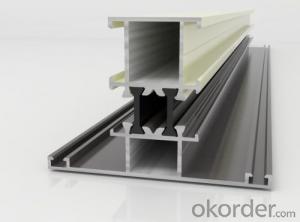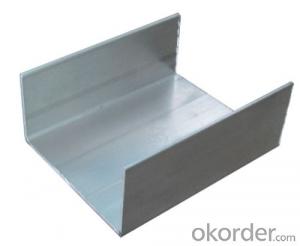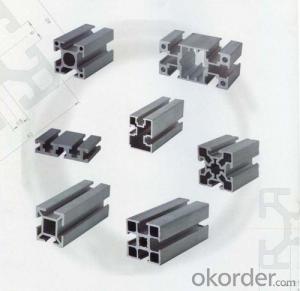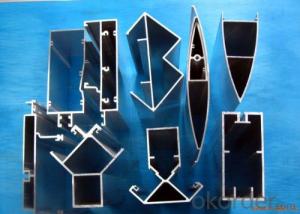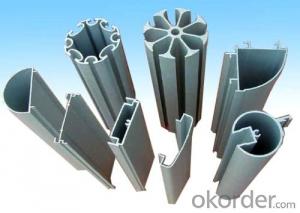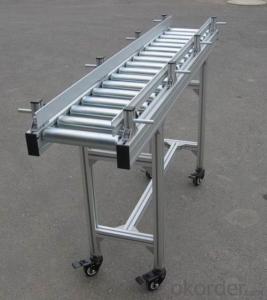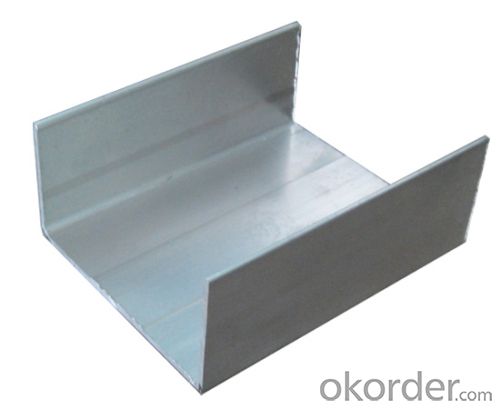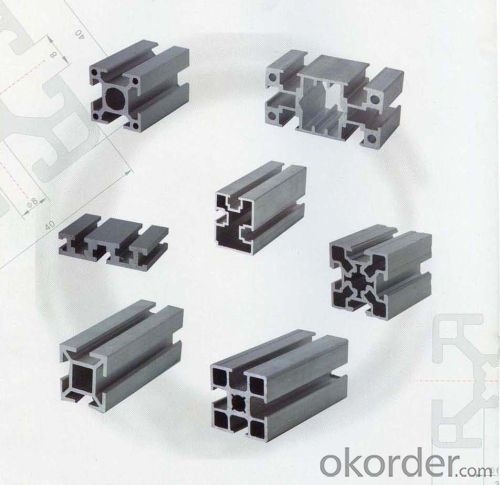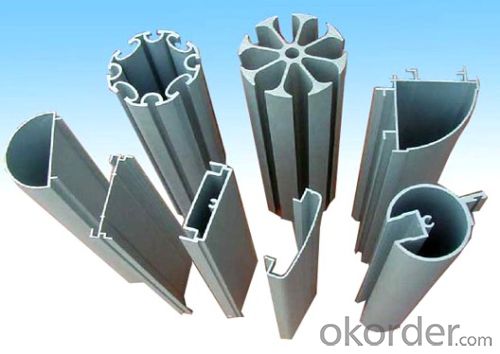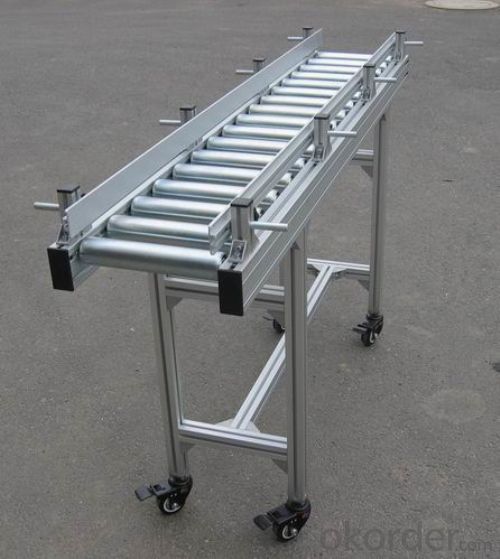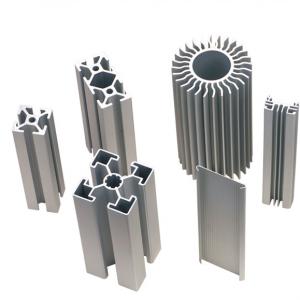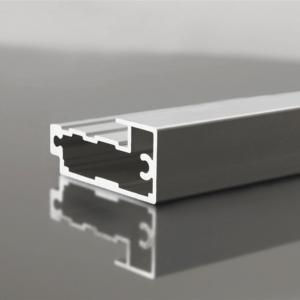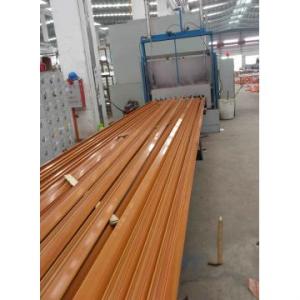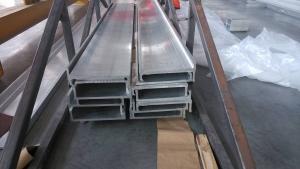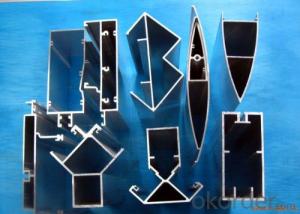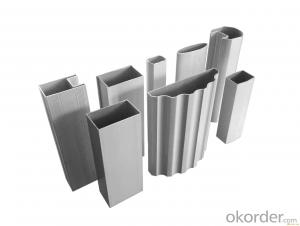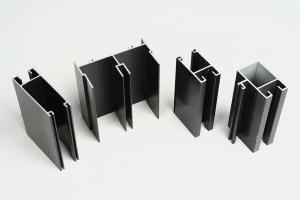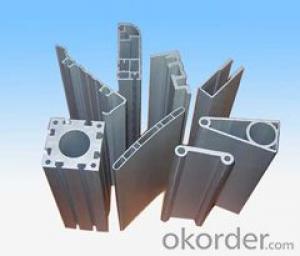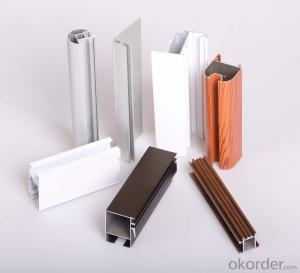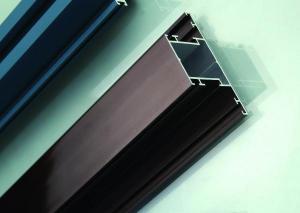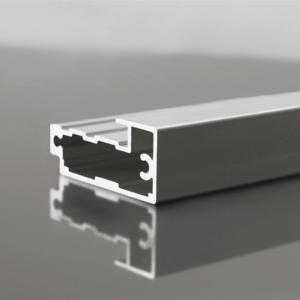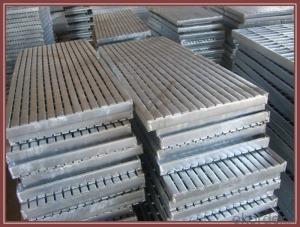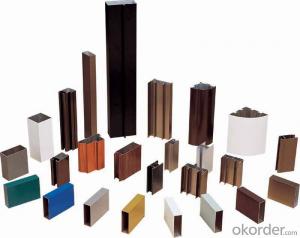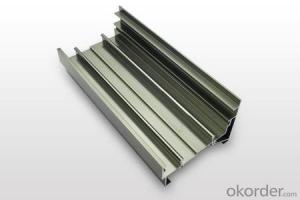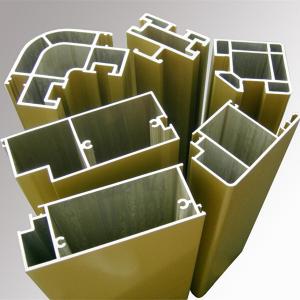China Aluminum Alloy Extrusion Profiles for Aluminum Frame and Profile Window Door Equipment
- Loading Port:
- Tianjin
- Payment Terms:
- TT OR LC
- Min Order Qty:
- 0.05
- Supply Capability:
- 10000 m.t/month
OKorder Service Pledge
OKorder Financial Service
You Might Also Like
Aluminum Frame for Window Door Equipment
Products Introduction of Aluminum Frame
Aluminum frame is made from aluminum and minerals. It's raw matrial for window frame, window frame, and other equipment frame. It's easy for construction, cost less, service longer than other materails. The size and design can be customerized.
Advantage of Aluminum Frame
-Build FLEXIBLE equipment, window, door.
-Bolt your structure together
-Build with Aluminum MORE EASILY
-Aluminum costs LESS
-Service life is more than 10 years
-Can be customerized
Specifications
(1) Product: Aluminium Frame;
(2) Material: Alloy 6063/6061/6005/6060, T5/T6;
(3) Finish: anodizing, powder coating, wooden, electrophoresis or any color;
(4) Size: customized, same as drawings or samples;
(5) Standard: High-quality;
(6) Characteristics: strong, stylish, durable, corrosion-resistant.
Aluminium Alloy: 6063, 6061, 6005, 6060 Thermal Treatment: T5, T6
Section Shapes
I, U, T, C, Z, L, H, square, round, flat, hollow, t-slot, and other complicated shapes by custom design.
Surface treating
Mill / Anodizing (oxidation) / Sand blasting / Powder Coating / Electrophoresis / PVDFCoating / Wood effect.
Application
1) - for Window and door frames, for Wardrobe cabinet sliding doors, kitchen, for Building curtain glass walls
2) -for Fencing, Rail, Deck and Frame.
3) - for Solar panel frames, solar mounting / roofing brackets
4) - for Industry assembly lines equipment.
5) - for Heatsinks, for LED lighting.
7) - other by custom design size and dimension
FAQ
-What's your company profile?
We CNBM is the largest building material supplier of China. We are Chinese government owned corporation, which takes the 267th place in WOLD FORTUNE 500 CORPORATION. We own the largest prodcution base in North and South of China. With more than 15 warehouses and offices in different countries, our products sell very well all over the world. We have whole quality control system. We'll be your reliable partner.
-Which kind of payment do you usually support?
TT, LC at sight.
-Can you provide samples?
Yes, we provide free of charge samples, you just need to pay for the delivery.
Photos:
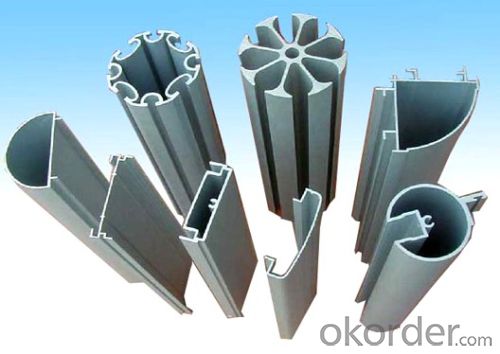

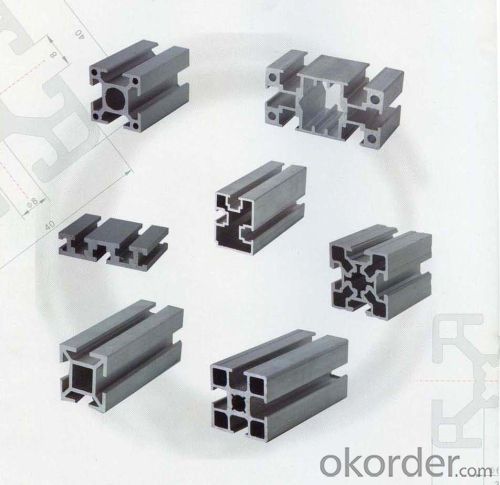
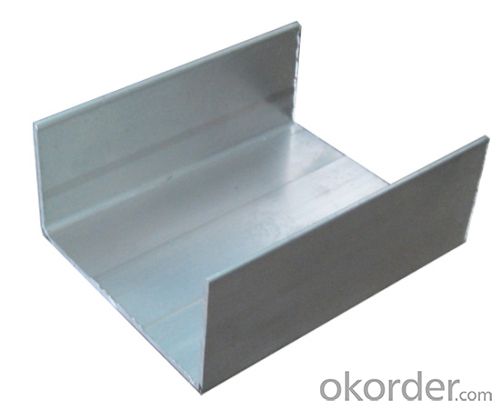

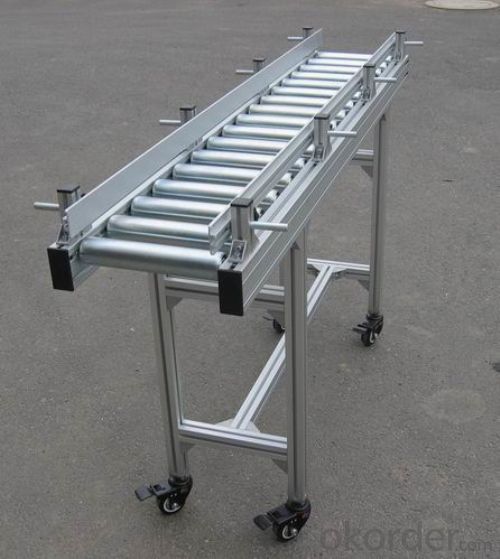
- Q: Are aluminum profiles recyclable and can they be used again in flooring applications?
- <p>Yes, aluminum profiles can be recycled and reused in flooring applications. Aluminum is a highly recyclable material, with recycling processes that retain its properties without loss in quality. This makes it an environmentally friendly choice for flooring as it reduces waste and conserves resources. Recycled aluminum can be used to create new profiles for flooring systems, maintaining strength and durability while offering a sustainable solution.</p>
- Q: Are aluminum profiles suitable for use as exterior wall materials?
- <p>Yes, aluminum profiles can be used for exterior walls. They are known for their durability, resistance to weathering, and low maintenance requirements. Aluminum is lightweight, strong, and can be easily shaped into various designs. It also has excellent resistance to corrosion, making it ideal for outdoor applications. Additionally, aluminum profiles can be powder coated or anodized for enhanced protection and aesthetic appeal, allowing them to blend well with different architectural styles.</p>
- Q: What are the different accessories available for aluminum profiles?
- Aluminum profiles offer a vast selection of accessories that can enhance their functionality and versatility. Included in this range are: 1. T-nuts: These facilitate threaded connections within the profiles, allowing for easy attachment of components like brackets, panels, and fasteners. 2. Corner connectors: These enable the joining of aluminum profiles at right angles, creating sturdy and rigid structures. They come in different designs, including external and internal corner connectors. 3. End caps: These seal the open ends of aluminum profiles, giving them a polished appearance and protecting against dust, debris, and potential injuries. 4. Brackets and fasteners: Essential for securing and supporting components within the profiles, these come in various shapes and sizes to suit different applications. 5. Panel mounts: Offering a secure and convenient way to attach panels or other flat surfaces, panel mounts can be easily adjusted or removed as needed. 6. Hinges and handles: Commonly used for attaching doors, lids, or covers to aluminum profiles, hinges allow for smooth opening and closing, while handles provide a comfortable grip. 7. Cable management solutions: Accessories like cable clips, cable ducts, and cable ties keep wires and cables organized within the profiles, ensuring a neat and professional appearance. 8. Leveling feet and casters: Useful for mobile structures or those requiring stability on uneven surfaces, leveling feet adjust the height and ensure stability, while casters provide mobility. 9. LED lighting solutions: Aluminum profiles are often used for LED lighting applications, and various accessories are available to integrate lighting strips, diffusers, and connectors for a seamless and professional lighting solution. 10. Sensors and switches: Accessories like sensor mounts and switch brackets are designed to integrate sensors or switches into aluminum profiles, allowing for easy installation and integration into automation or control systems. These examples represent just a fraction of the numerous accessories available for aluminum profiles. With such a wide selection, customization and adaptation to specific needs and applications are easily achievable, making aluminum profiles a dependable and versatile choice for various industries and projects.
- Q: Explain the advantages of utilizing aluminum profiles in the construction industry.
- <p>Aluminum profiles offer several benefits in construction, including high strength-to-weight ratio, which means they are strong yet lightweight. This reduces the load on structures and facilitates easier handling and installation. They are also corrosion-resistant, ensuring longevity and low maintenance costs. Aluminum profiles are recyclable and environmentally friendly, contributing to sustainable construction practices. Their malleability allows for versatile design and customization, accommodating various architectural needs. Additionally, they have excellent thermal conductivity, which can be beneficial for heat management in buildings. Lastly, their aesthetic appeal and modern look enhance the visual appeal of construction projects.</p>
- Q: What are the different machining techniques for aluminum profiles?
- There are several machining techniques that can be used for aluminum profiles, depending on the desired outcome and the specific requirements of the project. Some of the common machining techniques for aluminum profiles include: 1. Milling: Milling is a widely used machining technique that involves removing material from the aluminum profile using a rotary cutter. This technique can be used to create complex shapes, slots, and holes in the aluminum profile, and can be done manually or using computer numerical control (CNC) milling machines. 2. Drilling: Drilling is a machining technique that involves creating holes in the aluminum profile using a rotating cutting tool called a drill bit. This technique is commonly used to create holes of various sizes and shapes in aluminum profiles. 3. Turning: Turning is a machining technique that involves rotating the aluminum profile against a stationary cutting tool. This technique is used to create cylindrical shapes, such as shafts or rods, by removing material from the aluminum profile. 4. Bending: Bending is a machining technique that involves deforming the aluminum profile to create curved or angled shapes. This technique is commonly used in industries such as construction or automotive, where curved aluminum profiles are required for various applications. 5. Grinding: Grinding is a machining technique that involves abrasive particles being applied to the surface of the aluminum profile to remove material and create a smooth finish. This technique is often used to achieve precise dimensions and a high-quality surface finish on aluminum profiles. 6. Sawing: Sawing is a machining technique that involves cutting the aluminum profile using a saw blade. This technique is commonly used to cut aluminum profiles to the desired length or to create specific shapes. 7. Welding: Welding is a machining technique that involves joining two or more aluminum profiles together by melting and fusing the edges. This technique is commonly used in industries such as construction or aerospace, where strong and durable joints are required. These are just a few of the many machining techniques that can be used for aluminum profiles. The choice of technique depends on factors such as the desired outcome, the complexity of the design, and the specific requirements of the project.
- Q: Many aluminum extrusions are edge banding materials. What special advantages do they have for opening materials?.
- But in fact, the sealing material is more porous, which is a structural defect. In practice, there is no difference between the two. The opening material is not easy to seep and saves materials. Most of the materials used in the construction site are openings, and there is no problem at all. Sealing materials really do not have much merit.
- Q: What are the anti-static properties of aluminum profiles?
- Due to their inherent electrical conductivity, aluminum profiles exhibit exceptional anti-static properties. This unique feature enables them to effectively dissipate static charges and prevent the build-up of static electricity. Consequently, aluminum profiles find widespread use in various industries, including electronics, automotive, aerospace, and manufacturing. In these sectors, they serve multiple purposes such as supporting conveyor systems, providing protective enclosures, and serving as grounding components. By minimizing the dangers associated with static electricity, such as electrostatic discharge (ESD) damage, fire risks, and interference with delicate electronic devices, the anti-static qualities of aluminum profiles guarantee safe and dependable operations.
- Q: Can aluminum profiles be used for electrical bus ducts?
- Yes, aluminum profiles can be used for electrical bus ducts. Aluminum is a suitable material for bus ducts as it is lightweight, corrosion-resistant, and has good electrical conductivity. Additionally, aluminum profiles can be easily fabricated and installed, making them a popular choice for electrical bus ducts in various industries.
- Q: When will the aluminum mold be padded?
- The plane will die pad is a small pad on the inside of the die sleeve, and a large pad size is the size of the inner diameter of the sliding seat, there are generally several square and circular pad, some special structure material need professional pad, such as an open slot, the structure is not very stable, when die under high pressure are squashed requires a special pad.
- Q: What are the specific requirements or considerations when using aluminum profiles in the construction or design of swimming pools and spas?
- <p>Yes, there are special requirements for using aluminum profiles in swimming pools and spas. These include corrosion resistance to withstand chlorinated water, which is common in pools and spas. Profiles must be made of marine-grade aluminum to prevent rust and ensure longevity. They should also be able to withstand high humidity and temperature fluctuations. Additionally, profiles need to be non-slip and easy to clean to maintain safety and hygiene. The design should also consider structural integrity to support the weight of the pool or spa structure and any associated equipment.</p>
Send your message to us
China Aluminum Alloy Extrusion Profiles for Aluminum Frame and Profile Window Door Equipment
- Loading Port:
- Tianjin
- Payment Terms:
- TT OR LC
- Min Order Qty:
- 0.05
- Supply Capability:
- 10000 m.t/month
OKorder Service Pledge
OKorder Financial Service
Similar products
Hot products
Hot Searches
Related keywords
